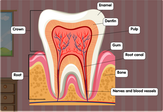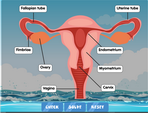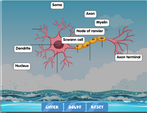Leaf cross section diagram labelling quiz
Leaves are tiny sun-collecting factories. Plants need sunlight to turn water and carbon dioxide into glucose and oxygen gas in an important process called photosynthesis. Glucose, after all, is the food that plants use to grow and continue living.
Because of their vital role in plant life, leaves are complex organs made of different layers and structures.
The outermost layers are called the upper and lower epidermis, which protect and sandwich the other layers inside. These layers also have small pores called stomata where CO2 can enter and oxygen can exit.
The leaf is attached to the plant’s stem at the petiole. From the petiole, a strong midrib at the center of the leaf keeps it strong and upright. Lots of veins branch out of the petiole to transport nutrients and water throughout the entire plant.
Leaves are usually green because they contain chlorophyll, an important chemical that uses energy from sunlight to perform photosynthesis. Most of a plant’s chlorophyll supply is found in the mesophyll layer.
In this leaf cross-section diagram labelling quiz, you can review the different structures that compose a plant leaf, and better connect each part to their role in performing photosynthesis for a plant to continue living.











